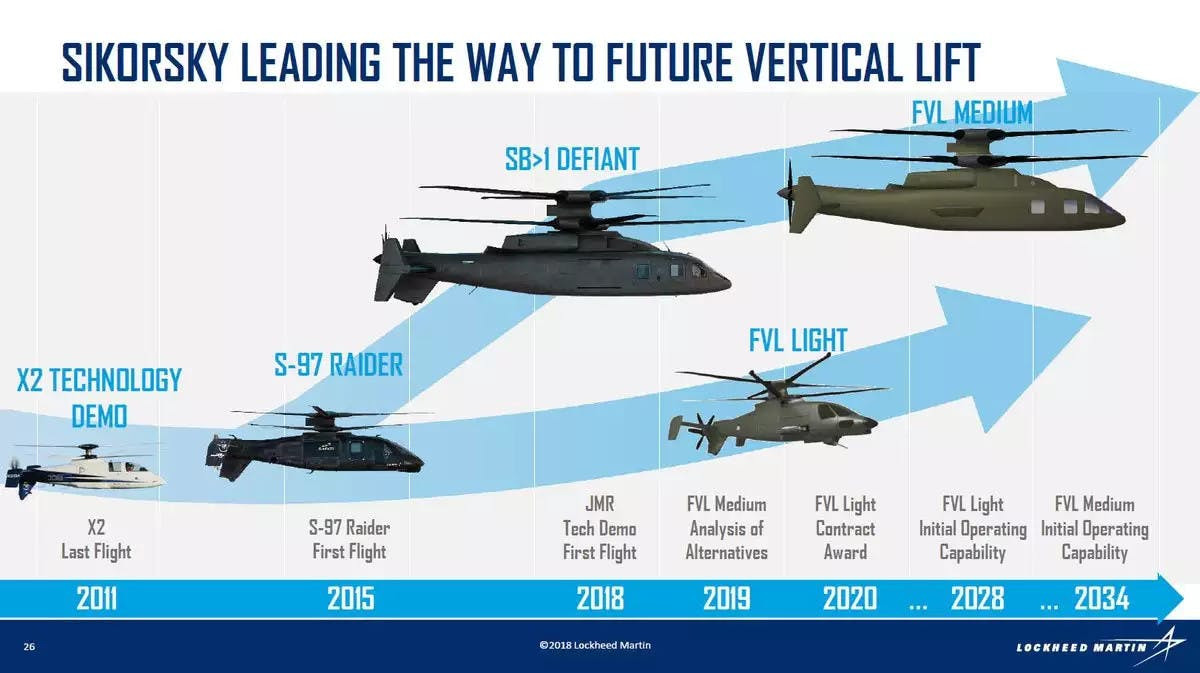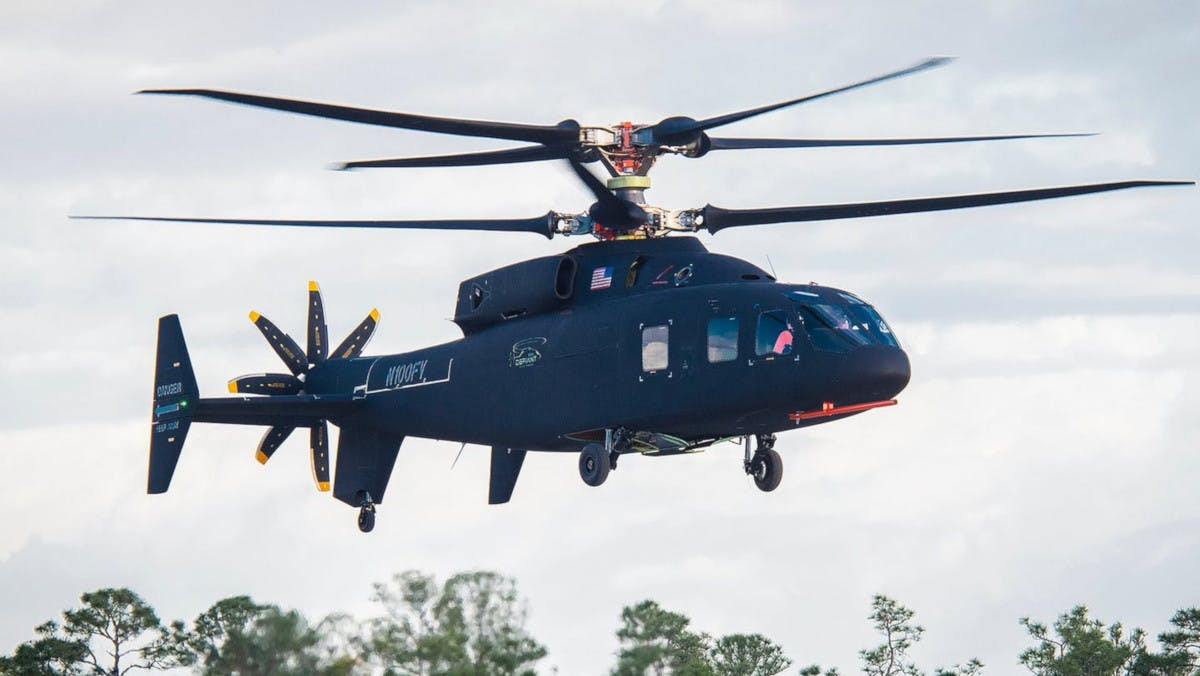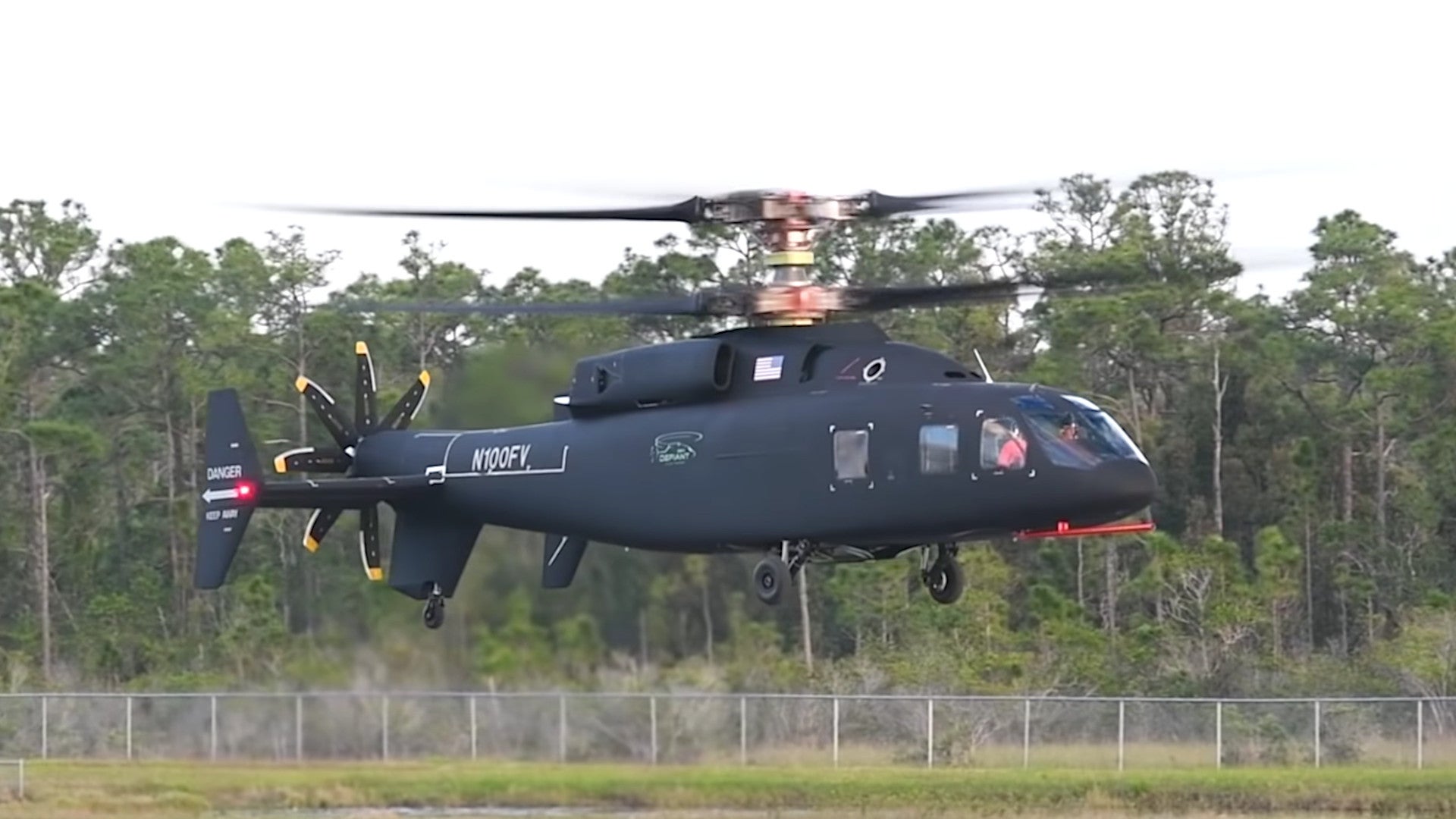Boeing and Sikorsky are gathering more propulsion system data on the ground to support further flight testing of their SB>1 Defiant advanced compound helicopter. After three successful flight tests, starting with the helicopter’s first flight in March 2019, the two firms are making tweaks to expand the helicopter’s flight envelope.
Update: This story has been significantly updated from the original. See details at the bottom of this story.
Chris Van Buiten, Vice President of Innovation at Sikorsky, which is now a division of Lockheed Martin, offered the update on the Defiant’s flight test plan during a media event at the company’s flight test facility in West Palm Beach, Florida, on June 24, 2019. Boeing and Sikorsky have been working together on the SB>1 as part of the U.S. Army’s Joint Multi-Role (JMR) advanced technology demonstration program and the two companies are proposing the design for the follow-on Future Long Range Assault Aircraft (FLRAA) program, which The War Zone has previously covered in detail here. FLRAA is part of the over-arching Future Vertical Lift (FVL) program, which is seeking replacements for all of the Army’s existing helicopters.
“We’re going through a tweak right now and the PSTB [propulsion system test bed] is running with some modifications and we’re about to restart the flight tests and, you know, we hope to march right through the speed points and you know, you’ve seen it in the past,” Van Buiten said. “We moved the speed out [in] 20-, 40-knot increments.”

The goal is for the Defiant to eventually demonstrate a cruising speed of 250 knots, substantially faster than traditional helicopters in the same general weight class, such as the Army’s existing UH-60 Black Hawks. The SB>1 uses a compound helicopter configuration with a pair of co-axial main rotor blades on top, as well as a pusher propeller in the rear, to achieve this high-speed flight.
The design is based on lessons learned from the similarly configured Sikorsky’s X2 demonstrator and S-97 Raider compound helicopters. The S-97 has a demonstrated speeds up 220 knots, though it is significantly smaller than the SB>1. Earlier this year, The War Zone conducted an in-depth interview with a number of Sikorsky representatives, including Van Buiten, discussing all three of these helicopters in detail, which you can find here.
The video below shows the S-97 putting on an impressive performance at the recent media event in Florida.

During the first two tests in March and April 2019, “the team proved out the expected speed for these tests: 10 knots forward, left, right and rearward,” Van Buiten told reporters. “It also proved out hover performance maneuverability, pedal turns, and a hover ladder from ground level up to 30 feet altitude.”
Bell’s V-280 Valor tilt-rotor, the other aircraft flying in the JMR technology demonstration, which is also set to be an FLRAA competitor, has been flying since December 2017 and has already demonstrated speeds in excess of 280 knots.

“In advance of envelope expansion, as planned, we are first increasing the power levels on our PSTB,” Melissa Chadwick, a Sikorsky spokesperson, told The War Zone in an Email. “We remain consistent with our development process, testing out these higher power loads on our PSTB before conducting additional maneuvers in flight. Upon successful PSTB endurance envelop expansion, we expect to be positioned to quickly expand the aircraft flight envelope later this summer.”
Boeing and Sikorsky had hoped the first flight would occur in December 2018, already a year behind schedule, but pushed that date back again after coming across unspecified issues during earlier testing of the PSTB. Sikorsky has underscored that the use of the PSTB to gather additional data, in this case, does not reflect a new delay in the flight test schedule.

“Over the summer of 2019 we expect to expand the envelope in flight tests with additional speed and maneuverability and provide the U.S. Army with the necessary, robust, and relevant data in a timely manner that will enable them to make fully informed decisions as they pursue the Future Vertical Lift program,” Van Buiten explained at the media event. The JMR program is set to end this year.
The Army is already moving ahead with the follow-on FLRAA and is looking to pick a final design in 2021. The Army’s goal, as it stands now, is to begin replacing its UH-60 Black Hawks with whatever aircraft it picks by 2030.
Author’s note: This story is significantly different from how it originally appeared, which framed the new developments as a possible delay given past issues with the SB>1 Defiant’s drivetrain. After publication, Sikorsky reached out to offer substantial clarifications about the test schedule and the pre-planned nature of ground-based testing using the PSTB, as is now reflected in the story above.
Contact the author: joe@thedrive.com
